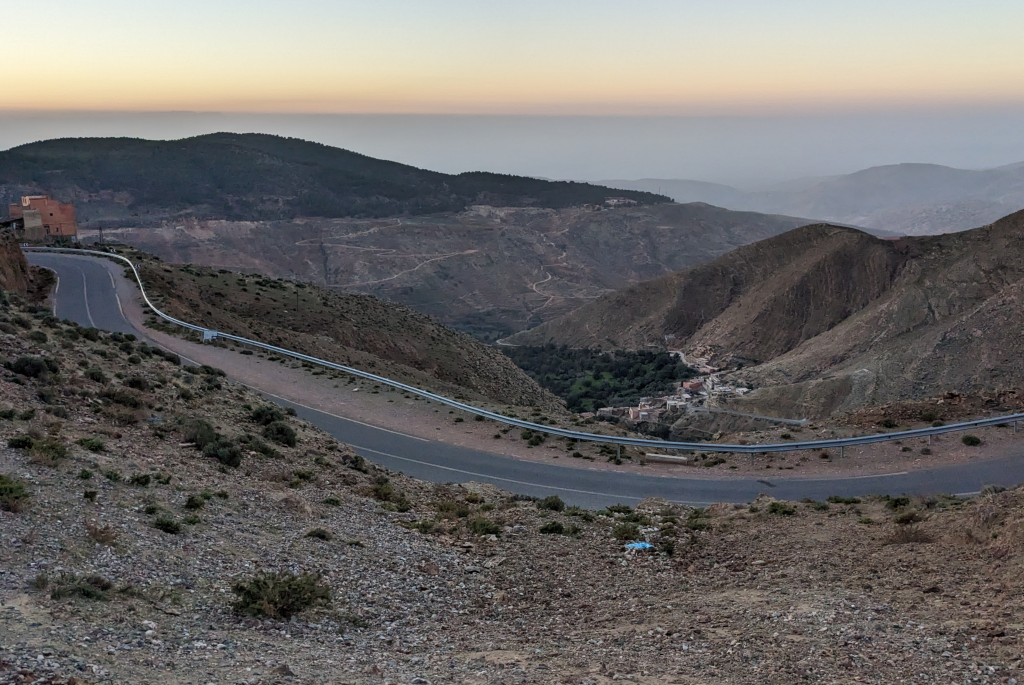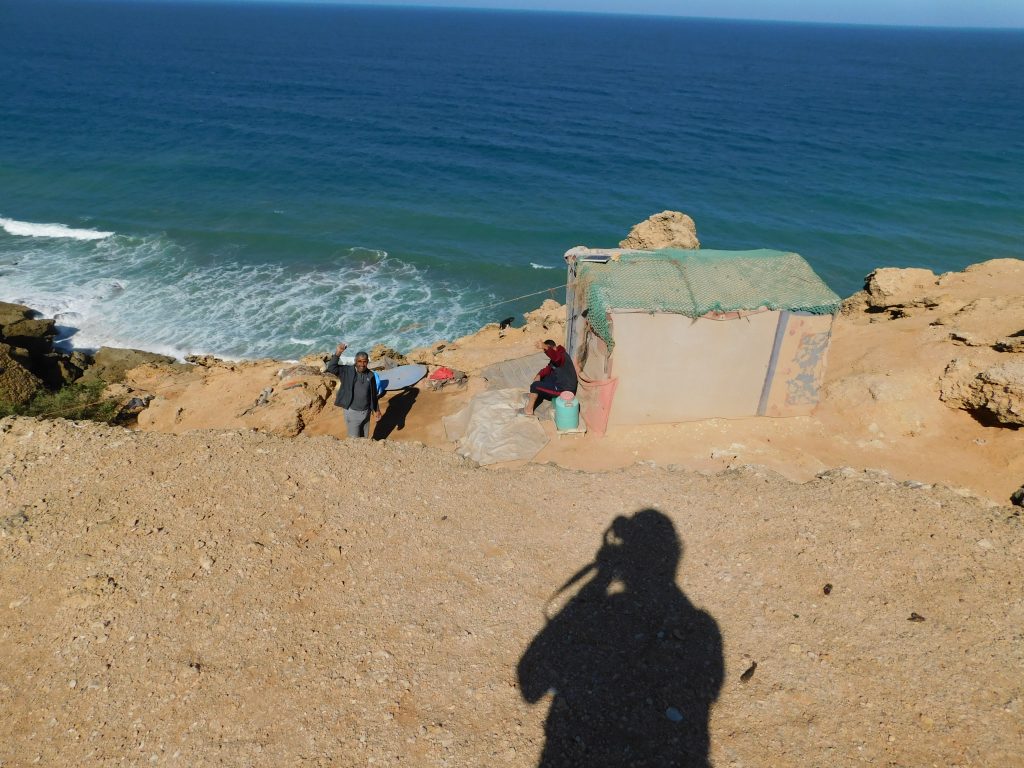Banjul Challenge – El Ouatia – 1/21/2023
Feb 17th, 2023 by rallyadmin
It’s just barely getting light when we go down for some breakfast of flat bread and omelet. It’s very cold in the first floor dining room. The fire from last night hasn’t done much to warm the room and, when I go outside to start packing the car, the wind is howling. I sure wouldn’t want to be in the High Atlas today.
The sun is just rising above the eastern horizon when we get the group moving. As we pass the Trotting Celts RV. We each let out a serious blast on the car horn. There’s no good reason for them to sleep if we have to drive. They’re probably happy to see us go.

There’s enough light to see the road well. Good thing. The road isn’t any better on this side of the mountains. It would have been pretty sketchy coming down in the dark last night if we hadn’t stopped at the hotel at Tisi-n-Test. Soon we’re down on the flat again and after the usual disagreement between GPS apps we settle on a route that takes us west into Western Sahara, the name that shall not be spoken.
Western Sahara is an area south of Morocco and west of Mauritania that was once colonized by Spain. It is currently administered by Morocco and coveted by Mauritania. Rather than try to explain this is any detail, here’s the opening sentence from the Wikipedia entry:
“Western Sahara (Arabic: الصحراء الغربية aṣ-Ṣaḥrā’ al-Gharbiyyah; Berber languages: Taneẓroft Tutrimt; Spanish: Sáhara Occidental) is a disputed territory on the northwest coast and in the Maghreb region of North and West Africa. About 20% of the territory is controlled by the self-proclaimed Sahrawi Arab Democratic Republic (SADR), while the remaining 80% of the territory is occupied[3][4] and administered by neighboring Morocco.” Here’s the link to the full entry: https://en.wikipedia.org/wiki/Western_Sahara.
“The name that shall not be spoken” is a jibe to the reaction that Morocco has when you use the words Western Sahara to refer to the area. To them it’s Morocco. To Mauritania, it’s Mauritania. Mauritania and Morocco even had a short war over this piece of arid desert. Suffice it to say, that the area is arid enough to wonder what could possibly be the attraction. I’m told the answer is phosphates and possible offshore oil. It sure isn’t the non-existent flora and fauna. There are a lot of camels there.
We drive down the coast road that periodically heads inland for a few kilometers and then heads back to the coast again. There are occasional small villages with no visible people. Every few kms there are small huts perched on the cliffs overlooking the ocean. We stop and take a few photos and meet a few fishermen living in the huts. It’s a long way down to the water to fish. Another oddity in the middle of the desert.

This goes on all day as we head south. Eventually we come on the town of El Ouatia. The sun is just starting to set and we stop at the first hotel on the way into town. Yes, they have rooms, enough for all of us. The rooms are clean but sparse.
A couple of km walk into the town proper looking for a bar. No joy on the bar. But we do find a pizza shop for dinner. A walk back with a few looking for an ATM. Back to the hotel and bed. Tomorrow, more of the same.
Obi

